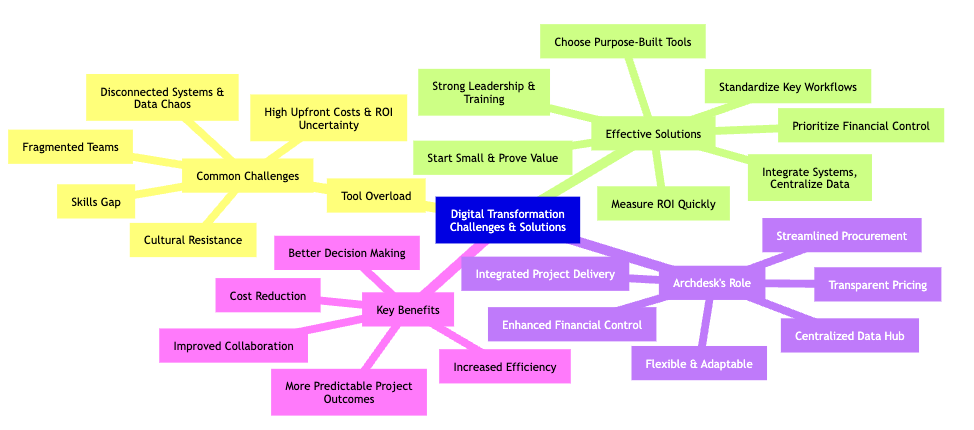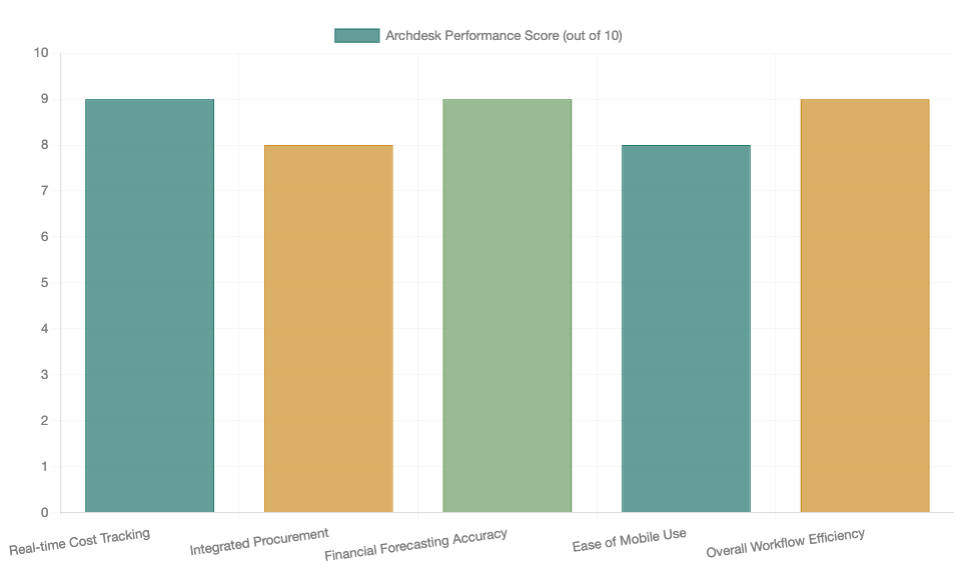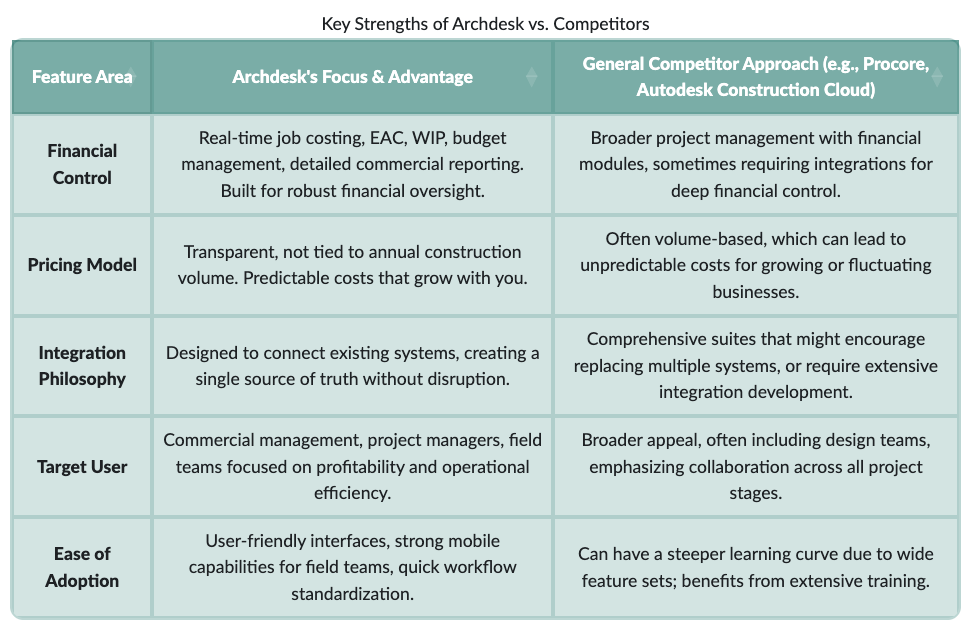You know the drill. You’re trying to run a business, build incredible structures, and then someone mentions “digital transformation.” Suddenly, you’re thinking about spreadsheets, endless software options, and convincing your most experienced crew member that a tablet isn’t just for playing games. It’s enough to make anyone want to just stick with the blueprints, isn’t it?
Honestly, it’s a common story in construction. The industry, for all its innovation in building, has often been a bit slower to adopt new tech in its back office and on its sites. It’s not a lack of trying, though. Everyone sees the headlines; everyone knows digital is the future. But making that leap? Well, that’s where things get interesting, and sometimes, a little messy.
Why the Digital Roadblock Feels So Stubborn
So, why does it feel like pushing a rope uphill when you try to bring new technology into your construction company? It’s not usually one big thing, but a mix of interconnected challenges that can make the whole process feel overwhelming. Let’s break it down.
The "We've Always Done It This Way" Mindset
Cultural Pushback
This is probably one of the biggest, and most human, reasons. Your veteran superintendent, who’s been building things for decades with a pencil behind his ear and a stack of drawings, might just see new software as an unnecessary complication. He’s seen it all, done it all, and frankly, what he’s been doing works. Convincing someone like that to adopt a new digital workflow feels like asking a master craftsman to trade his chisels for a 3D printer overnight. There’s a natural, almost instinctual, resistance to fixing something that doesn’t feel broken, even if you know, deep down, the data tells a different story about efficiency and costs.
It's about comfort, you know? People are comfortable with their routines. Disrupting that with a new system, new screens, and new ways of reporting can feel threatening, even if it promises to make their lives easier in the long run. It needs to be clear, simple, and show immediate benefits.
The Skills Gap: Not Everyone's a Tech Whiz
Workforce Preparedness
Let's face it, the construction workforce isn't exactly brimming with software engineers. While many younger folks are digitally native, a significant portion of the experienced crew might struggle with complex applications. This isn't a criticism; it's just reality. When you introduce new tools, you also introduce the need for new skills. And without proper, hands-on training that’s easy to digest and immediately applicable, adoption rates plummet. What good is a fancy new system if no one knows how to use it, or worse, avoids it altogether?
The Data Dilemma: A Jumble of Information
Disconnected Systems and Information Silos
Many construction firms are still operating with what I affectionately call "data chaos." You’ve got your estimating in one spreadsheet, your project schedule in another, financial data in accounting software, and perhaps RFIs and change orders buried in emails or a different platform. It's like having all the pieces of a puzzle scattered across different tables; you can’t see the full picture. This fragmentation leads to duplicated efforts, errors, and an inability to get a real-time, accurate overview of your projects. You can't make smart decisions when your data is always a few steps behind.
This problem is particularly acute because construction projects are so dynamic. Things change fast. If your systems aren't talking to each other, vital information about costs, schedules, or materials gets lost, and that can lead to costly overruns and delays. Imagine trying to manage a complex build when nobody has the same version of the truth.
The Money Talk: Upfront Costs and ROI Doubts
Financial Considerations
Investing in new technology isn't cheap. There are licensing fees, implementation costs, and the expense of training your team. For many construction companies, especially mid-sized ones or those with fluctuating project volumes, that initial financial commitment can feel like a big gamble. And let's be honest, everyone wants to know if it's actually going to pay off. Will this software genuinely save money, or is it just another line item on the budget?
Some solutions, like Procore or Autodesk Construction Cloud, often base their pricing on your construction volume. While powerful, this model can feel unpredictable and a bit daunting for businesses that are growing or those who just want clear, fixed costs. You don’t want to pay for a fleet of features you might not even use.
Navigating the Digital Landscape: Charting Your Course
So, given all these hurdles, how do you actually make digital transformation work for your construction business? It's not about finding a magic bullet, but rather taking a strategic, pragmatic approach. It’s about building momentum, one successful step at a time.
Start Small, Prove the Value
Targeting Pain Points
Don't try to digitize everything at once. That's a recipe for overwhelm and failure. Instead, pinpoint one or two major pain points in your current operations. Maybe it’s tracking material costs, managing subcontractor invoices, or handling change orders. Find a digital solution that addresses that specific problem, implement it, and then showcase the clear benefits to your team. When they see how real-time cost data prevents budget overruns or how a streamlined RFI process saves hours, they'll become champions for further adoption.
This approach builds confidence and demonstrates tangible ROI quickly. It’s much easier to scale when you have internal success stories.
Choose Tools Built for Construction, Not Just Adapted
Purpose-Built Solutions
This is where understanding your needs really matters. You need software that speaks the language of construction, not a generic business tool shoehorned into your workflow. Solutions like Archdesk are built from the ground up with construction processes in mind. Unlike broader project suites or design-focused tools that might offer a lot of features you don’t need, Archdesk focuses on core operational and financial control.
For example, Archdesk aims to give you complete financial clarity, connecting everything from initial client inquiries to final invoicing in one place. It’s not just about managing projects; it’s about managing your entire business more effectively, keeping an eagle eye on costs, procurement, and progress.

Comparison of construction software features. This radar chart illustrates the strengths of different platforms across key operational areas.
Integrate, Don't Isolate
Connecting Your Ecosystem
A truly effective digital solution shouldn't force you to scrap everything you already use. It should connect to your existing systems. The goal is to create a single source of truth, pulling data from your accounting software, your scheduling tools, and other essential applications. This way, you avoid manual data entry, reduce errors, and ensure everyone is working with the most current information. This seamless flow of data is crucial for accurate forecasting and project oversight.

Construction team collaborating with digital tools, emphasizing the importance of integrated systems.
Empower Your Team: Training and Leadership
Leading by Example
Digital transformation can't be a top-down mandate without involvement. As a leader, your enthusiasm and commitment are contagious. Show your team how these tools make their jobs easier, freeing them from tedious paperwork so they can focus on what they do best: building. Invest in proper, accessible training – short, on-site sessions, cheat sheets, and identifying "champions" on each job site who can help others. When your field supervisors can quickly raise an RFI, approve a purchase order, or attach photos directly from the site, the office gets cleaner data by default, and everyone wins.
Archdesk: Your Partner in Digital Progress
When we talk about solutions, it's worth highlighting how Archdesk stands out. It's purpose-built for construction businesses that really need financial control and practical field workflows all in one coherent system. Unlike some of the broader, more general construction suites out there that might prioritize design collaboration, Archdesk really leans into commercial management.

Mindmap illustrating the intertwined challenges of digital transformation in construction and the solutions, emphasizing Archdesk's unique offerings.
Archdesk excels in areas like real-time job costing, procurement, managing commitments, and accurate forecasting, alongside powerful project delivery tools. It really aims to give you a clearer picture of your financial health, helping you understand exactly where your money is going and where you’re making it back. It’s about fewer point solutions and cleaner data, which, let’s be honest, is what every construction leader dreams of.

Archdesk's operational strength across key areas, demonstrating its ability to enhance efficiency and financial oversight.
A Quick Look at Regional Needs
Whether you're in North America, dealing with labor constraints and needing faster onboarding for new staff, or in Europe, facing tender pressure and tight margins that demand procurement rigor, or even in the GCC with fast schedules and many subcontractors, the core need remains the same: a clear, auditable, and efficient system. Archdesk’s flexibility means it can adapt to various workflows, from general contractors to specialty trades, without requiring months of consultancy.
Key Strengths of Archdesk vs. Competitors

This table highlights how Archdesk differentiates itself by prioritizing financial and operational efficiency within construction workflows.
The Path Forward: Small Steps, Big Impact
You don’t need a moonshot to see real progress. What you really need is clean costs, fewer disconnected tools, and some fast wins that your team can feel. Start by defining your core cost structure and a few key workflows that cause the most headaches. Then, configure a platform like Archdesk to handle these, focusing on areas like budgets, purchase order approvals, and RFIs.
After that, train your site champions. Get them comfortable, empower them, and let them show their peers how much easier things can be. Roll out the new system on a pilot project, gather feedback, and iterate. Measure your ROI in weeks, not years. Look at things like how quickly change orders are processed, the accuracy of your cost-to-complete estimates, or the time it takes to get an invoice paid. If those numbers aren’t moving in the right direction, you can tweak the workflow. It's about constant improvement, always.
Honestly, when you have a platform that treats financial control as the absolute core of your construction business – not just some afterthought – it changes everything. It keeps your numbers honest, your projects on track, and allows your team to focus on what they do best. And you know what? That's often all it takes to truly turn the ship.
FAQ
Why is digital transformation so hard in construction?
It's tough because of cultural resistance to change, a prevalent skills gap among the workforce, the chaos of disconnected data systems, and concerns about the upfront cost versus the return on investment. The industry's traditional nature often clashes with the demands of modern technology.
What are the biggest barriers to adopting new construction tech?
Key barriers include convincing long-time employees to change established methods, integrating disparate software systems that don't "talk" to each other, the high initial financial outlay for new tools, and the lack of a digitally savvy workforce requiring significant training.
How can I make my team adopt new software more easily?
Start small by addressing specific pain points, provide simple and accessible training, demonstrate immediate benefits (like time or cost savings), and lead by example. Empower "champions" on your team to guide others, making the transition feel less daunting.
What's the most important area to focus on first when going digital?
Prioritizing financial control and cost management is often the most impactful starting point. Getting a real-time grip on job costing, procurement, and forecasting can quickly show tangible ROI and build momentum for further digital initiatives.
How does Archdesk differ from other construction software like Procore or Autodesk Construction Cloud?
Archdesk distinguishes itself by focusing heavily on comprehensive financial control, real-time job costing, and procurement, offering a more commercial management-centric approach. Its pricing model is transparent and not tied to construction volume, and it emphasizes seamless integration with existing systems to avoid data silos.
Conclusion
Navigating the digital transformation in construction doesn't have to be an insurmountable challenge. By understanding the core hurdles – from cultural resistance and skills gaps to fragmented data and financial uncertainties – and adopting a strategic, step-by-step approach, your company can move forward with confidence. The key lies in choosing purpose-built tools that align with your operational needs, integrating your data ecosystems, and, most importantly, empowering your people. When you prioritize clear financial oversight and streamline your workflows, the benefits ripple across your entire business. It's about building a smarter, more efficient, and ultimately more profitable future, one thoughtful digital step at a time.
References
Archdesk vs Autodesk Construction Cloud | Archdesk
Best Procore Alternative 2025 | Construction Software - Archdesk





